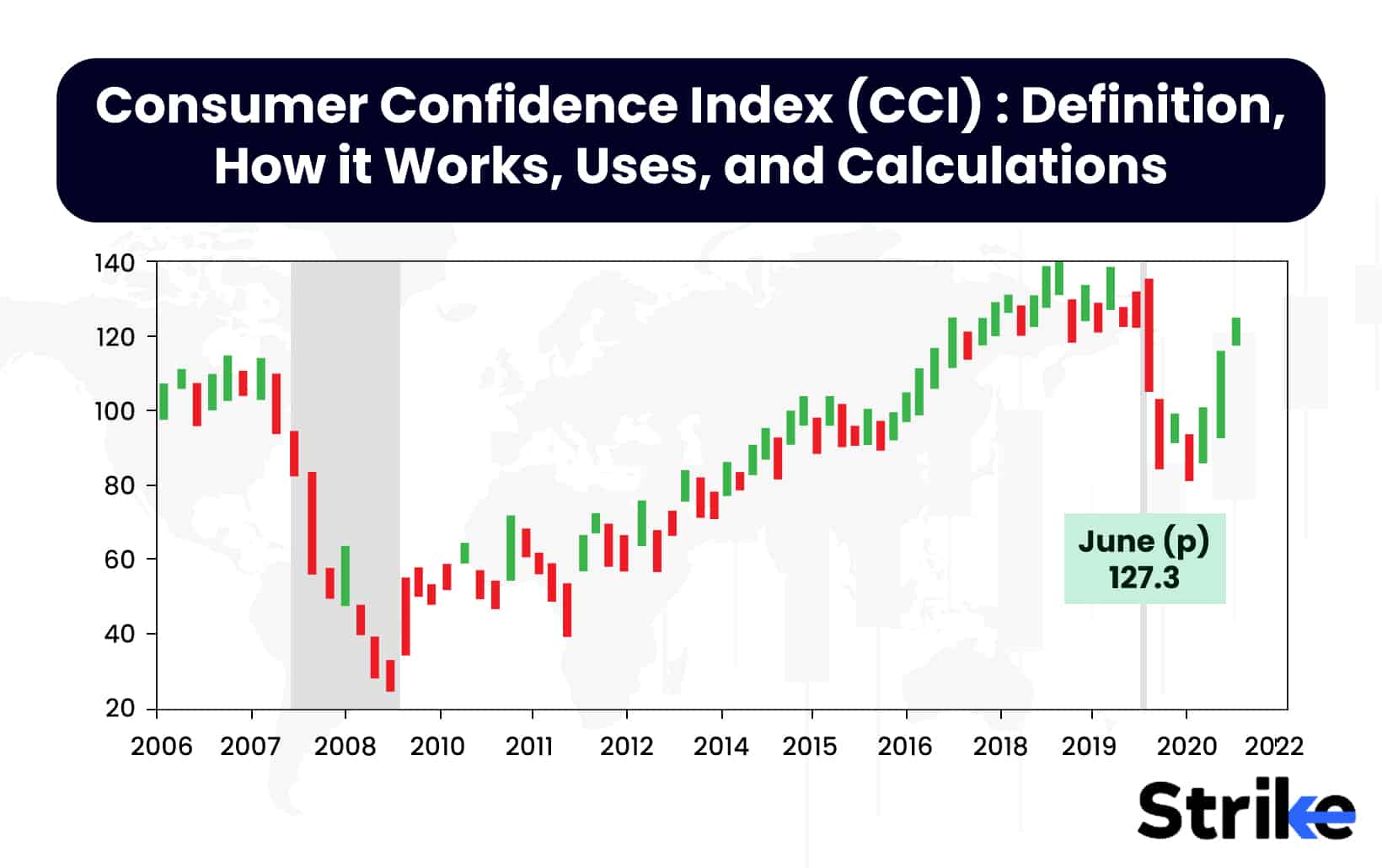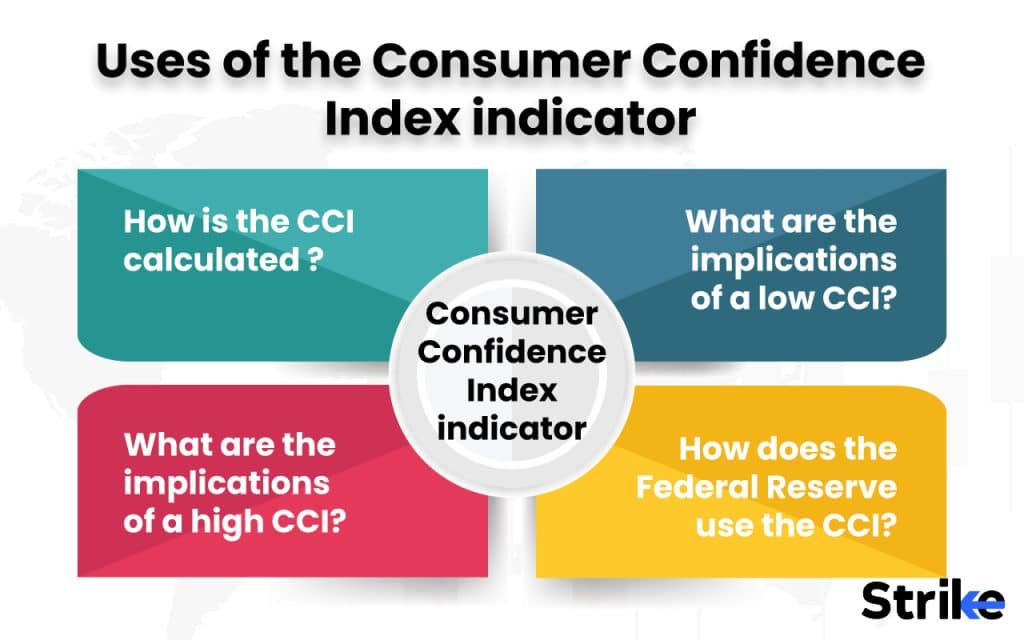
The Consumer Confidence Index (CCI) is a key economic indicator that provides valuable insights into consumer sentiment and spending trends in India. CCI is published monthly by the National Council of Applied Economic Research (NCAER). The CCI summarises consumer attitudes based on a nationwide survey of households. The survey captures both current and future economic perceptions of consumers relating to parameters like overall business conditions, employment opportunities, income expectations, inflation outlook, and purchasing inclination. By aggregating responses to these qualitative factors, the CCI condenses the prevailing consumer psyche into a single quantitative metric.
A CCI reading above 100 signals optimism among consumers regarding the state of the economy and their personal finances. This typically augurs well for discretionary spending and aggregate demand. Conversely, a sub-100 print reflects growing pessimism, cautioning of decelerating consumer expenditure ahead. Over time, trends in the CCI have mirrored movement in GDP cycles by acting as a leading indicator of economic activity changes.
Retail investors and analysts monitor the CCI diligently as it provides early clues on sectors and stocks set to benefit from robust demand fuelled by sanguine consumers. It also serves as a valuable macroeconomic input for gauging corporate profitability and overall market direction in the upcoming months. In this context, the Consumer Confidence Index is an indispensable tool for formulating effective equity market strategies in India.
What is the meaning of the Consumer Confidence Index?
The Consumer Confidence Index (CCI) is an economic indicator that measures the level of consumer confidence, optimism, and health of the economy from the perspective of the average consumer. The Consumer Confidence Index (CCI) is based on a monthly survey of around 5,000 households and generates a numeric index that provides insight into future consumer spending and economic growth.
How does the Consumer Confidence Index (CCI) function?
Consumer Confidence Index (CCI) functions in a way that measures consumer sentiment on current economic conditions and expectations for the future through a monthly survey of 5,000 households. It is the degree of optimism consumers have about the state of the economy and their own financial situation. It is a key indicator used extensively in the Indian stock markets to gauge consumer sentiment and predict consumer spending trends.
The CCI is calculated based on a monthly survey of 5000 households across 13 major cities in India conducted by the Reserve Bank of India (RBI). The survey asks respondents questions relating to the current economic conditions as well as their expectations for the next year. The survey examines economic and employment conditions today compared to one year ago, as well as expectations for economic and employment conditions one year from now. Specifically, it looks at how economic conditions have changed over the past year and what the expectations are for the coming year. It also compares employment conditions today to a year ago and asks about expectations for employment conditions over the next year. The goal is to gauge both current conditions and future outlooks related to the economy and jobs.
Why is the Consumer Confidence Index (CCI) important?
The Consumer Confidence Index is an important economic indicator because high consumer confidence generally indicates economic growth while declining consumer confidence can signal a future economic downturn. In the Indian stock market context, the CCI is an important leading indicator that influences the overall market direction and performance of consumer discretionary stocks.
The CCI is calculated based on a monthly survey of households regarding their views on the current economic conditions as well as expectations for the next year. The survey questions relate to employment scenarios, income levels, prices, spending intentions, etc. The CCI summarises this qualitative data into a numeric indicator that depicts the level of optimism or pessimism among consumers.
What are the uses of the Consumer Confidence Index indicator?
The five uses of the Consumer Confidence Index indicator are to gauge consumer sentiment, anticipate consumer spending trends, forecast stock market performance, and predict economic growth cycles in the Indian context. They are given below.

1. Gauge consumer spending: The CCI is a leading indicator of consumer spending, which makes up over half of India’s GDP. The CCI shows that consumers who are confident and optimistic are more likely to spend freely on big-ticket items like cars, appliances, vacations, etc. This increased spending will boost corporate revenues and profits. Stock prices tend to rise when companies are growing profits.
2. Insight into economic growth: As consumer spending is a major driver of the economy, CCI provides an outlook on future economic growth. A high and rising CCI indicates strong economic expansion ahead. This translates into higher corporate earnings and stock prices. A low and declining CCI signals a potential economic slowdown, leading to stock market corrections.
3. Input for monetary policy: The Reserve Bank of India factors in consumer confidence while making interest rate decisions. RBI hikes rates to cool the economy and markets if consumers are too exuberant. RBI cuts rates to stimulate growth if confidence is low. CCI helps assess the pulse of consumers when formulating monetary policy.
4. Sentiment indicator for stocks: The CCI gauges optimism among households who participate in stock markets as investors. A high CCI indicates bullishness among retail investors, which creates a positive environment for stocks to rise further. Falling CCI shows pessimism creeping in and a greater risk of market declines.
5. Time equity purchases and sales: Equity investors use CCI trends to help time purchases and sales. It signals improving sentiment and a tailwind for stock prices – a good time to buy when CCI is rising. It flags waning confidence and potential headwinds for stocks – indicating investors consider selling or reducing exposure when CCI is falling.
Tracking the Consumer Confidence Index gives investors valuable information on consumer sentiment and spending patterns. This provides important clues on future performance for the overall economy, specific sectors and stocks, corporate earnings, and equity market cycles. The CCI is a useful macroeconomic indicator for Indian stock market analysis and strategy.
How is the Consumer Confidence Index (CCI) used in Stock Market trading?
The Consumer Confidence Index (CCI) is used in Stock Market trading as an indicator to gauge sentiment among consumers regarding the overall state of the economy. In India, the CCI is published monthly by the National Council of Applied Economic Research (NCAER). The survey asks households about their views on the general economic situation, employment, and income. The Indian CCI uses a baseline of 100, so a reading above 100 indicates optimism, while below 100 shows pessimism.
Indian stock traders closely monitor the CCI to predict how consumer attitudes impact discretionary spending and corporate earnings. It implies consumers feel positive enough to increase purchases, boosting prospects for consumer companies and stocks when the index rises. However, if the CCI declines, it warns of potential belt-tightening that could hurt revenue and profits.
How often do traders use the Consumer Confidence Index to Analyze the stock market?
Traders frequently monitor the Consumer Confidence Index, which is one of many indicators that help analyze the stock market. Traders closely monitor the CCI released monthly by the Reserve Bank of India. The Indian CCI has proven to be an effective indicator in analyzing market trends. A rising CCI boosts investor sentiment and results in increased retail participation and buying activity. It signals traders that the market outlook is positive. Conversely, a falling CCI dampens sentiment and prompts caution. Traders take it as an early warning sign to reduce exposure or adopt defensive positions.
What is the Formula for the Consumer Confidence Index (CCI)?
The formula for calculating CCI is given below.
CCI = [Present Situation Value + Expected Situation Value]/2
Where,
Present Situation Value = Percentage of respondents saying business conditions are good + Percentage saying business conditions are bad (negative)
Expected Situation Value = Percentage of respondents expecting better business conditions in 6 months + Percentage expecting worse business conditions in 6 months (negative)
How to Calculate the Consumer Confidence Index (CCI)?
The Consumer Confidence Index (CCI) is calculated by conducting surveys of households, analyzing the results, and aggregating the data into an index value. A step-by-step guide is given below.
Calculate the typical price for a period.
The typical price for a period is calculated as an unweighted mean of the high, low, and closing prices of a security over a specified timeframe. It is a technical analysis tool used by investors and traders to analyze the average price and smooth out volatility. The typical price incorporates three key prices to assess the average equilibrium price. Now, the formula to calculate the typical price is given below.
Typical Price = (High + Low + Close) / 3
Where,
High price – The highest price at which the stock is traded during a particular period. This gives insight into how ‘optimistic’ investors were.
Low price – The lowest price the stock dropped to during the timeframe. The law gives a sense of the most ‘pessimistic’ sentiment.
Close price – This is the final price at the end of the trading period. It represents the agreed price most buyers and sellers settled on.
To calculate the typical price, simply add the high, low, and close prices, then divide the sum by three to get the mean average. This smooths out intraday volatility or any extreme highs or lows.
Calculate the raw Consumer Confidence.
The formula to calculate the raw Consumer Confidence Index is given below.
Raw Consumer Confidence = (X1 + X2) / 2
Where X1 is the Present Situation Index, and X2 is the Expectations Index.
Let X1 represent the Present Situation Index. This index reflects consumers’ appraisal of current business and employment conditions compared to those of the recent past, as well as their assessment of their own financial situation. The Present Situation Index consists of consumer opinions on the current job market, which we define as laborious, or consumer opinions on the present state of business, which we define as enterprising, and consumer appraisal of their own present financial situation, which we define as prosperous.
Let X2 represent the Expectations Index. This index captures consumer outlook regarding future business and employment conditions as well as their expected future financial situation. The Expectations Index consists of consumer expectations about future employment prospects, which we define as promising; consumer expectations about future business conditions, which we define as thriving; and consumer expectations about their future income prospects, which we define as upbeat.





![85 Common Stock Market Terminologies for Dummies [Updated List for 2026] 16 85 Common Stock Market Terminologies for Dummies [Updated List for 2025]](https://www.strike.money/wp-content/uploads/2025/04/Popular-Stock-Market-Terms-for-Beginners-Banner.png)










No Comments Yet.